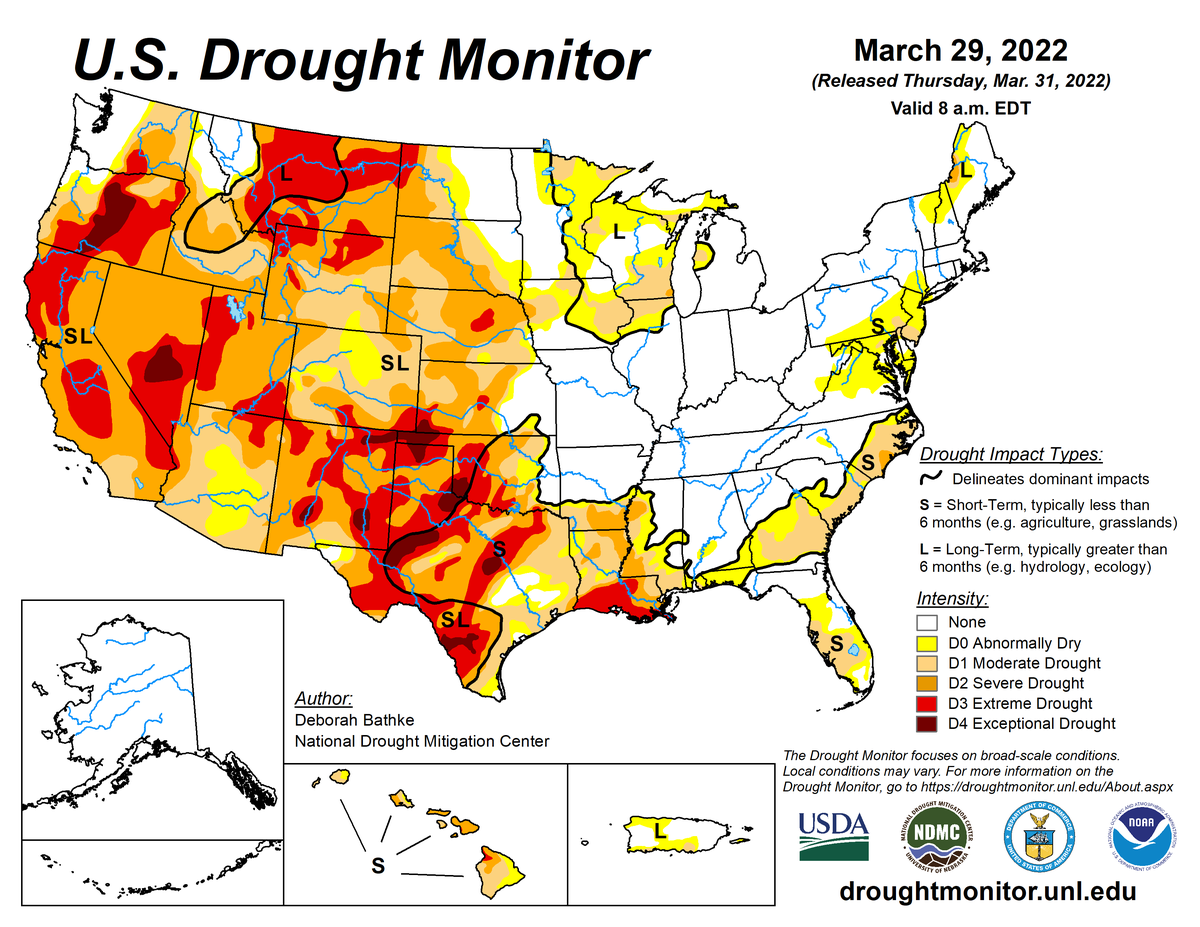
According to the March 29, 2022, U.S. Drought Monitor, moderate to exceptional drought covers 48.6% of the United States including Puerto Rico, a decrease from last week’s 48.8%. The worst drought categories (extreme to exceptional drought) increased from 13.8% last week to 14.3%.
The atmospheric circulation across the contiguous United States consisted of an extremely meridional pattern. Strong ridges that spread warm air far to the north were interwoven with strong troughs that pulled cold air far to the south. This pattern migrated eastward across the country. The monitoring week began with a trough and its deep surface lows and complex system of fronts spreading rain and snow across eastern and northern portions of the country, with a warm and dry ridge dominating the West.
The week ended with the eastern trough moving out into the Atlantic, the ridge shifting to the Plains, and another deep low pressure system and trough barreling into the West. When integrated across the week, ridging dominated the West and troughing dominated the East. This was reflected in the weekly temperature anomalies, with the West averaging warmer than normal and the Plains to East Coast mostly cooler than normal. Enough precipitation fell from the eastern system to give the Great Lakes a wetter-than-normal week, but precipitation in other parts of the East was spotty, with above-normal precipitation falling in the Lower Mississippi Valley and parts of the Southeast and Northeast. The late-week system gave parts of California and the Four Corners states a wetter-than-normal week.
But most of the West and Great Plains and parts of the Ohio Valley and East Coast states were drier than normal. Drought or abnormal dryness contracted in parts of the Great Lakes, Midwest, and Lower Mississippi Valley where precipitation was above normal. Drought or abnormal dryness expanded or intensified across parts of the West, Great Plains, and Southeast, where drier-than-normal conditions continued. Contraction exceeded expansion, with the nationwide moderate to exceptional drought area decreasing, but the area of most intense drought (extreme to exceptional drought) increased.
Abnormal dryness and drought are currently affecting over 171 million people across the United States including Puerto Rico—about 55.1% of the population.

The full U.S. Drought Monitor weekly update is available from Drought.gov.
In addition to Drought.gov, you can find further information on the current drought as well as on this week’s Drought Monitor update at the National Drought Mitigation Center.
The most recent U.S. Drought Outlook is available from NOAA’s Climate Prediction Center and the U.S. Department of Agriculture provides information about the drought’s influence on crops and livestock.
For additional drought information, follow #DroughtMonitor on Facebook and Twitter.



